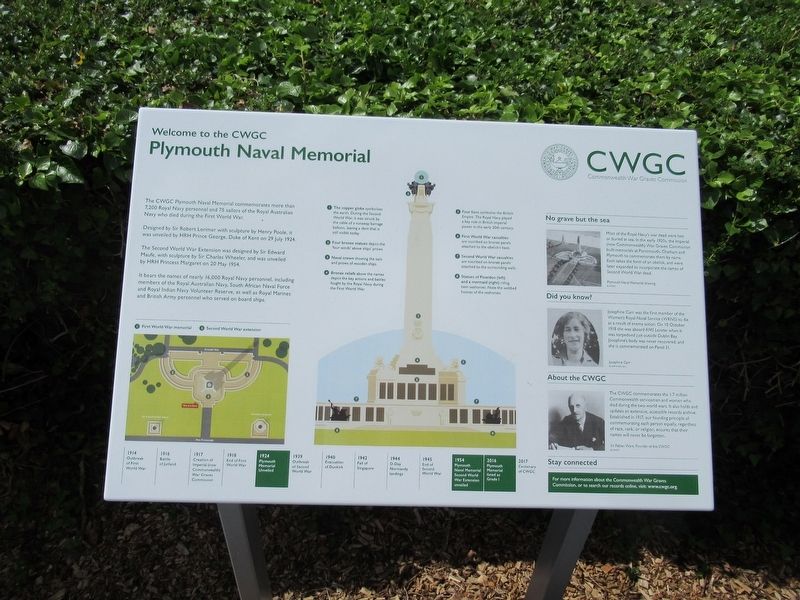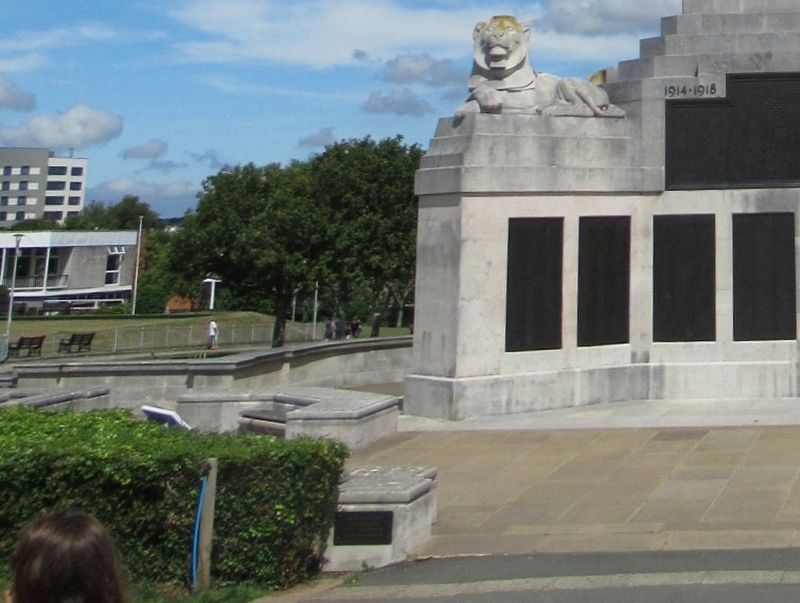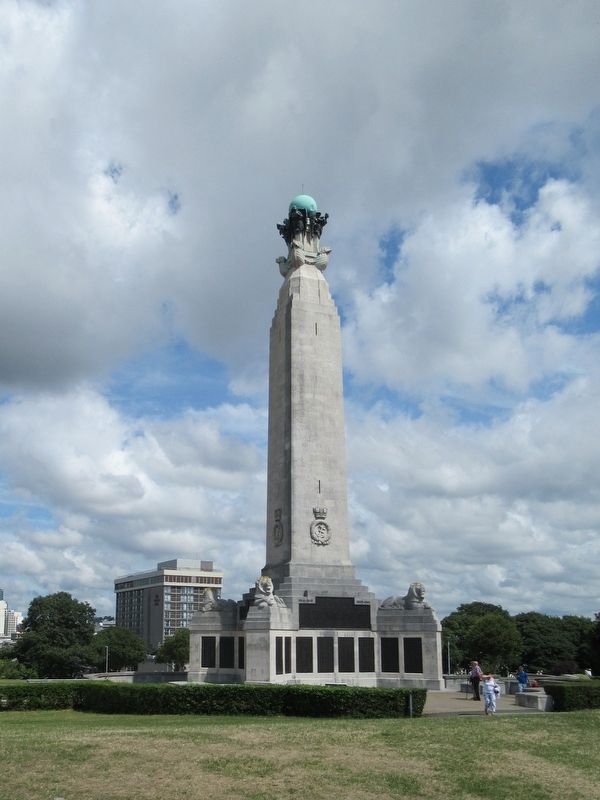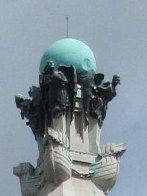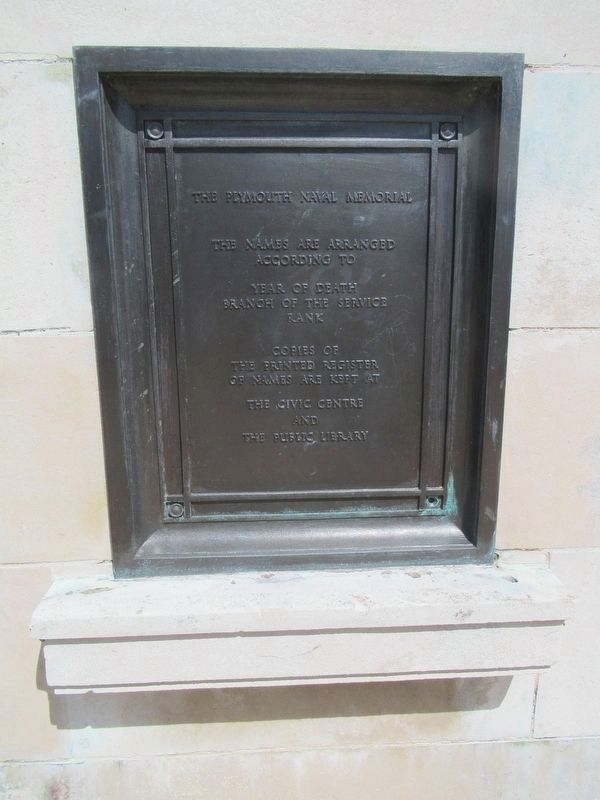Plymouth, England, United Kingdom — Northwestern Europe (the British Isles)
The Plymouth Naval Memorial
Welcome to the CWGC Plymouth Naval Memorial
The CWGC Plymouth Naval Memorial commemorates more than 7,200 Royal Navy personnel and 75 sailors of the Royal Australian Navy who died during the First World War. Designed by Sir Robert Lorimer with sculpture by Henry Poole, it was unveiled by HRH Prince George, Duke of Kent on 29 July 1924. The Second World War Extension was designed by Sir Edward Maufe, with sculpture by Sir Charles Wheeler, and was unveiled by HRH Princess Margaret on 20 May 1954. It bears the names of nearly 16,000 Royal Navy personnel, including members of the Royal Australian Navy, South African Naval Force and Royal Indian Navy Volunteer Reserve, as well as Royal Marines and British Army personnel who served on board ships.
1 The copper globe symbolises the earth. During the Second World War, it was struck by the cable of a runaway barrage balloon, leaving a dent that is still visible today.
2 Four bronze statues depict the four winds' above ships' prows Naval crown showing the sails and prows of wooden ships.
3 Naval crown showing the sails and prows of wooden ships.
4 Bronze reliefs above the names depict the key actions and battles fought by the Royal Navy during the First World War.
5 Four lions symbolise the British Empire. The Royal Navy played a key role in British imperial power in the early 20th century.
6 First World War casualties are inscribed on bronze panels attached to the obelisk's base.
7 Second World War casualties are inscribed on bronze panels attached to the surrounding walls.
8 Statues of Poseidon (left) and a mermaid (right) riding twin seahorses. Note the webbed hooves of the seahorses.
No grave but the sea
Most of the Royal Navy's war dead were lost or buried at sea. In the early 1920s, the Imperial (now Commonwealth) War Graves Commission built memorials at Portsmouth, Chatham and Plymouth to commemorate them by name. Each takes the form of an obelisk, and were later expanded to incorporate the names of Second World War dead.
Did you know?
Josephine Carr was the first member of the Women's Royal Naval Service (WRNS) to die as a result of enemy action. On 10 October1918 she was aboard RMS Leinster when it was torpedoed just outside Dublin Bay. Josephine's body was never recovered, and she is commemorated on Panel 31.
About the CWGC
The CWGC commemorates the 1.7 million Commonwealth servicemen and women who died during the two world wars. It also holds and updates an extensive, accessible records archive. Established in 1917, our founding principle of commemorating each person equally,
regardless of race, rank, or religion, ensures that their names will never be forgotten.
Stay connected
For more information about the Commonwealth War Graves Commission, or to search our records online, visit: www.cwgc.org
1914 Outbreak of First World War
1916 Battle of Jutland
1917 Creation of Imperial (now Commonwealth) War Graves Commission
1918 End of First World War
1924 Plymouth Memorial Unveiled
1939c Outbreak of Second World War
1040 Evacuation of Dunkirk
1944 D-Day Normandy landings
1945 End of Second World War
1954 Plymouth Naval Memorial Second World War Extension unveiled
2016 Plymouth Naval Memorial listed as Grade I
2017 Centenary of CWGC
( photo captions )
Plymouch Naval Memorial drawing
Jasephine Carr
Sir Fabian Ware, Founder of the CWGC
Topics and series. This memorial is listed in these topic lists: War, World I • War, World II. In addition, it is included in the Lost at Sea series list.
Location. 50° 21.929′ N, 4° 8.543′ W. Marker is in Plymouth, England. Memorial can be reached from the intersection of Osborne Place and Citadel Road, on the left when traveling south. Located on the Hoe Promenade. Touch for map. Marker is in this post office area: Plymouth, England PL1 2PU, United Kingdom. Touch for directions.
Other nearby markers. At least 8 other markers are within walking distance of this marker. A different marker also named Plymouth Naval Memorial (a few steps from this marker); a different marker also named The Plymouth Naval Memorial (within shouting distance of this marker); Drake Memorial (within shouting distance of this marker); National Armada Memorial (within shouting distance of this marker); Plymouth RAF Monument (within shouting distance of this marker); Smeaton Lighthouse (about 120 meters away, measured in a direct line); Tribute of Plymouth (about 150 meters away); Frank Bickerton (about 150 meters away). Touch for a list and map of all markers in Plymouth.
Credits. This page was last revised on January 27, 2022. It was originally submitted on September 25, 2018, by Michael Herrick of Southbury, Connecticut. This page has been viewed 318 times since then and 43 times this year. Photos: 1, 2, 3, 4, 5. submitted on September 25, 2018, by Michael Herrick of Southbury, Connecticut.
